Bathgate Beneath Your Feet
Early coal workings beneath Bathgate Town Centre
F22018 - First Published 29th October 2022
Bathgate town centre is generously served by car parks, and its streets are enriched by numerous green spaces where you can sit among the shrubbery and watch the world go by. It seems an inspired piece of town planning, but has been made necessary by the efforts of forgotten miners more than two centuries ago. Some streets that were once lined with solid commercial Victorian buildings now seem like a smile with missing teeth; the gaps filled with greenery or more recent and flimsier buildings.
At least four seams of coal outcrop somewhere beneath the ground to the south of Hopetoun Street; the most significant being the six-foot seam of the Bathgate Main coal. The coal layer plunges into the ground in a north-westerly direction at a gradient of 1 in 4.
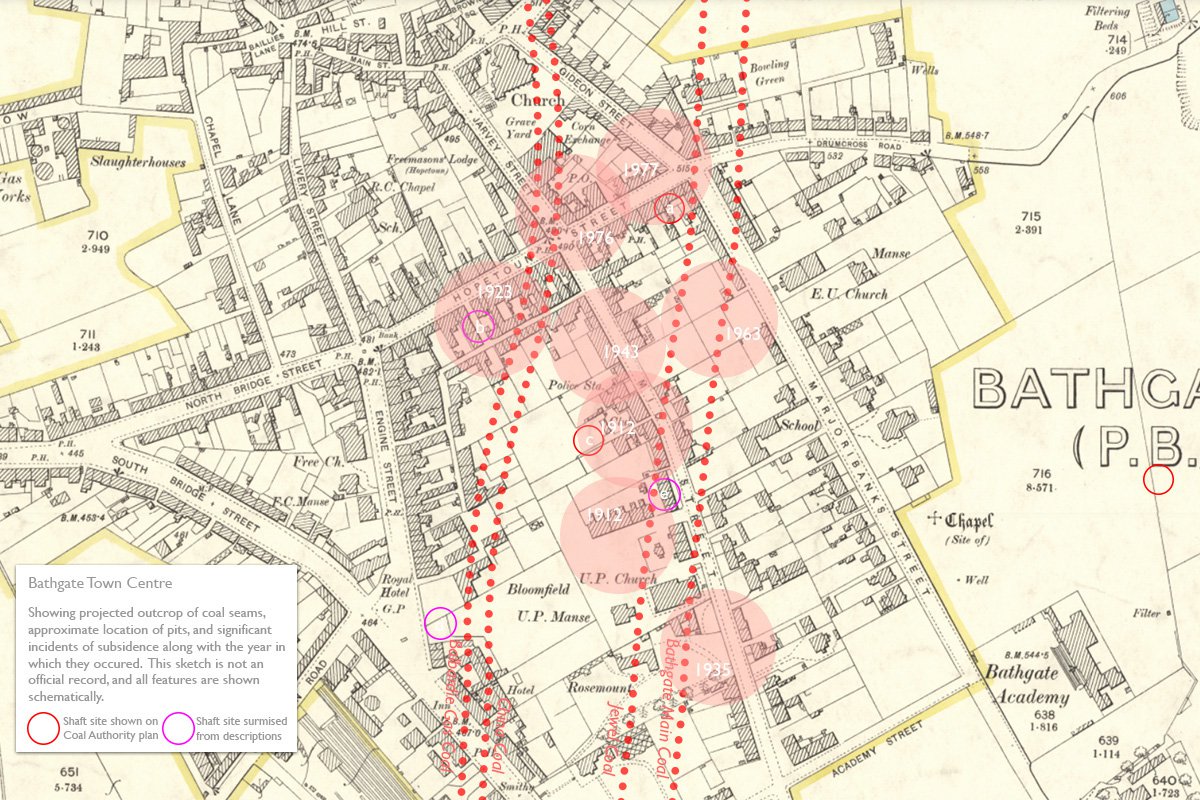
25" OS map c.1895 with location of seams and major centres of subsidence marked upon it.
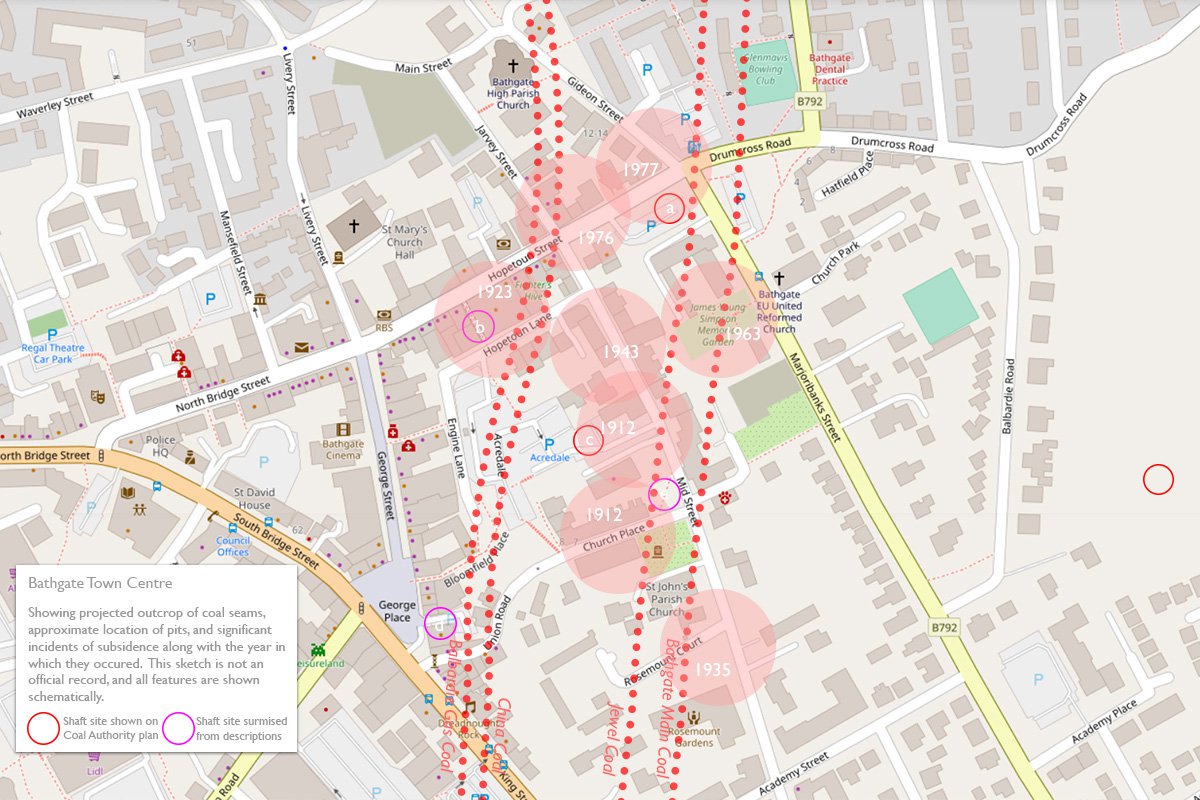
Contemporary map with location of seams and major centres of subsidence marked upon it.

It seems probable that from the 17th century, coal was worked close to where it outcropped at the surface, using little more than ladders and baskets. Where the coal lay deeper buried, close to Hopetoun Street, shafts were later sunk to access one or more seams. This coal was probably worked as “stoops and rooms”, leaving pillars of coal to support the ground above. One account speaks of rooms being cut “beneath a street called the “Shuttlerow” (was this an early name for Gideon St?)
Very little documentary record of these early pits has survived, and we can only guess at their location from later descriptions. One useful source is “Chats with old Bathgate Residenteers”; a series of articles published around 1900 in which Bathgate’s most venerable citizens shared their early memories. Some recalled the traces of early mining that survived when they were children, relating their locations to the shops and houses that existed in 1900. While not all accounts are consistent, the site of three pits can be determined with a fair degree of certainty. One pit with a steam winding engine lay close to Mid Street, at top of the “Dotted Knowe” or “Engine Knowe”, somewhere close to the present Farmer Autocare Centre on Mid Street. A second engine house, for winding or pumping, seems to have been sited close to the present-day Steelyard, somewhere near Greggs the bakers; whilst a gin pit, using horse power to wind the shaft, was sited near Hopetoun Street at the back of the present Ballencrieff pub.
In the early days, this mining activity lay in countryside a good distance from the old town of Bathgate, that was centred around the High Street. As Bathgate grew eastwards during the mid 18th century, the mining areas became surrounded by streets and buildings. The last major piece of this new road layout was the construction of the Bathgate and Airdrie turnpike road (now the A89) opened in about 1792. The engine-house of one of the Bathgate coal-pits seems to have been a prominent landmark on the new road – a notice from 1792 speaks about a section of the road “betwixt the Engine at Bathgate and Newliston Bridge” A new road between Hopetoun St and the turnpike road (now known as George St.), and a section of the turnpike itself (now King St.) was for a long time named Engine Street and the line of working buildings behind it was known as Engine Lane.
A newspaper advert of 1799 refers to the development of the Engine pit at Bathgate colliery, however a further advert just two years later, offering a “steam engine and horse gin” for sale, suggests that the enterprise had not been a success. By 1815 the Bathgate colliery was described as “abandoned”.
The remains of mining activity seem to have been covered over and forgotten for a while as the thriving town of Bathgate developed. A gentle settlement of some property was quietly tolerated, however in 1912 an outbreak of serious subsidence along Mid Street caused walls to crack, ceilings to collapse, and one block of houses to move an inch from the pavement. It was also reported that “old fissures had widened in Jarvey St., Gideon St. and Mill Road.” Settlement of many streets required constant attention, and in many places the cast granolitic surface of pavements had to be replaced by concrete slabs that could more easily be dug up and reset when repairing gas pipes and sewers.
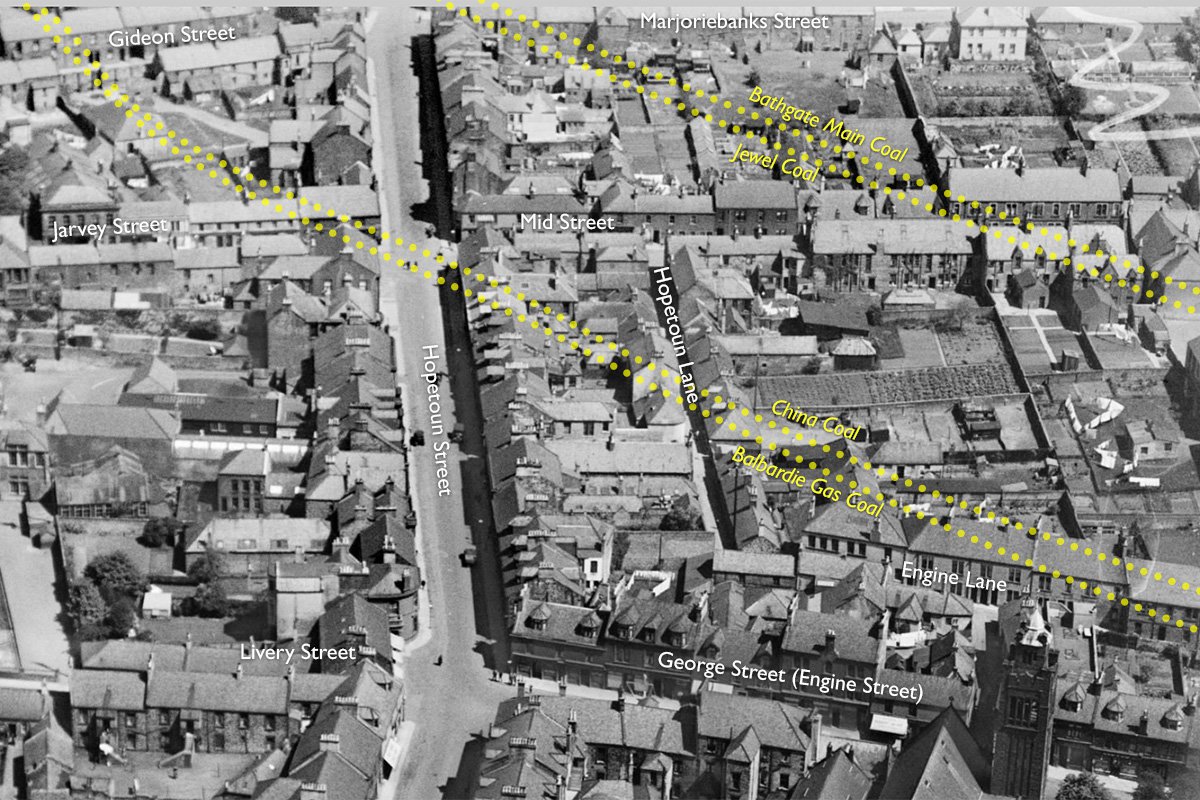
Aerofilms photo from 1929 (courtesy of Britain from above) with the location of seams overlaid
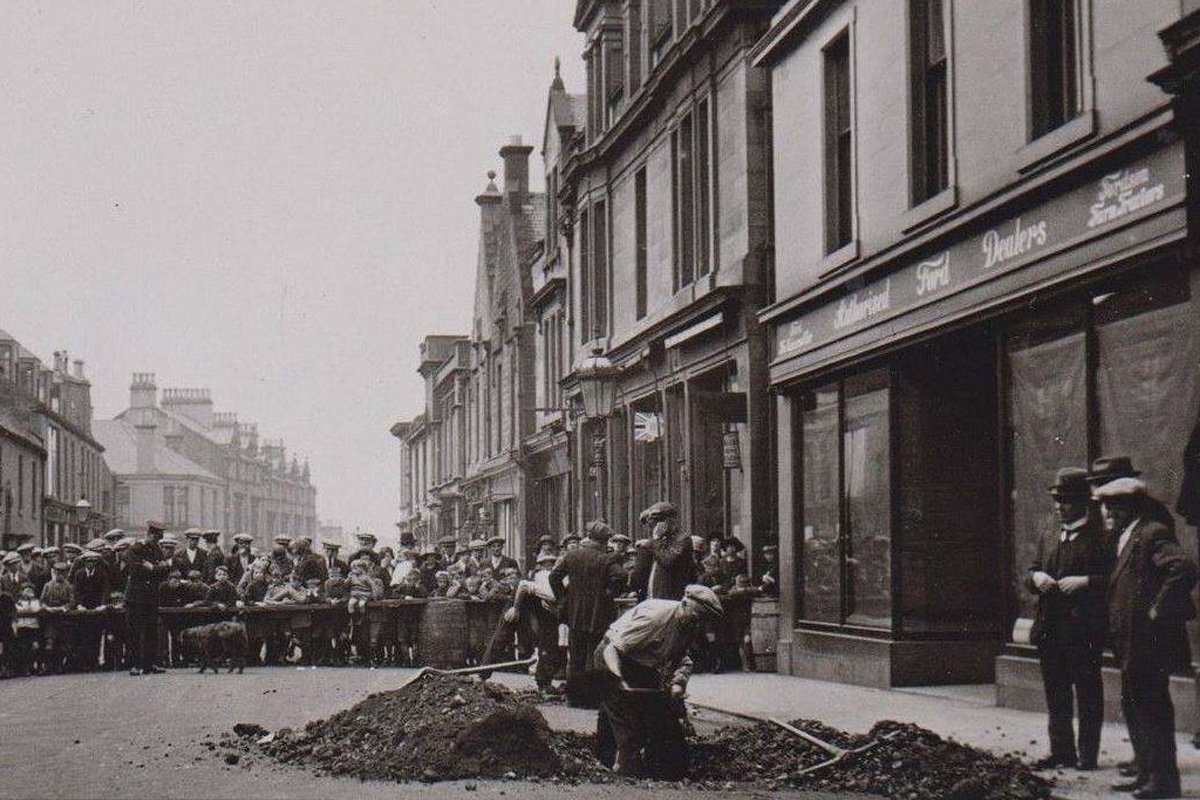
Repairing gas mains in Hopetoun St., probably following the 1923 subsidence.
In June 1923, those working and living near Hopetoun Street became aware of strange noises and rumblings, and a feeling that something odd was happening. After a few days of uncertainty there was a sudden subsidence extending a hundred yards along Hopetoun St, causing windows to break, walls to crack, and gas mains to rupture. Many were forced from their home and roads had to be dug-up to plug the gas mains. However once the dust had settled, the scene attracted curious crowds, and it was reported that some Broxburn took a bus trip simply to survey the devastation. The damage to “Bathgate’s Princes St” remained evident for many years afterwards.
In 1943, Mid St was again the focus of subsidence when the police station was seriously damaged (and subsequently demolished), requiring the station sergeant and his family to re-housed at short notice. By 1968, property at the north end of Marjoriebanks St had begun to “move” and many houses in Gideon St and the top end of Hopetoun St were showing serious damage from subsidence. There was concern for the council’s flagship block of flats on Marjoriebanks St., (a proud product of the 1960’s) which lay at the centre of the affected area. The clever construction, supported in part on concrete pillars, showed no signs of subsidence, but exploratory boring discovered underground voids that had not been detected at the time of construction. These were promptly filled-up with grout. Most of the properties affected by subsidence on the south side of High Hopetoun St, and a good part of Gideon St., were compulsorily purchased in 1977 and then demolished. Many of these sites now remain as car parks or landscaped green spaces. In other sites subject to subsidence, gaps have usually been filled with lightweight low-rise buildings constructed on a concrete raft.
Bathgate Working Men’s Club and Institute on Mid Street was built in 1875 as a haven where the working man might play billiards, draughts, bagatelle or carpet bowls, or else read books, enjoy a smoke, or take a bath. The solid and much-extended sandstone building lies at the heart of the subsidence area, but continues to stand firm despite all neighbouring property having been damaged and demolished. It’s been repaired and propped up for over a century; with windows re-framed to prevent glass from breaking and billiard tables brought down from the first floor when it proved impossible to keep them level. Today you can clearly make out the cracks and battle-scars of its long history, and the front wall leans endearingly into Mid Street, yet it still stands defiantly as a testament to its builders and as a memorial to an industrial past.
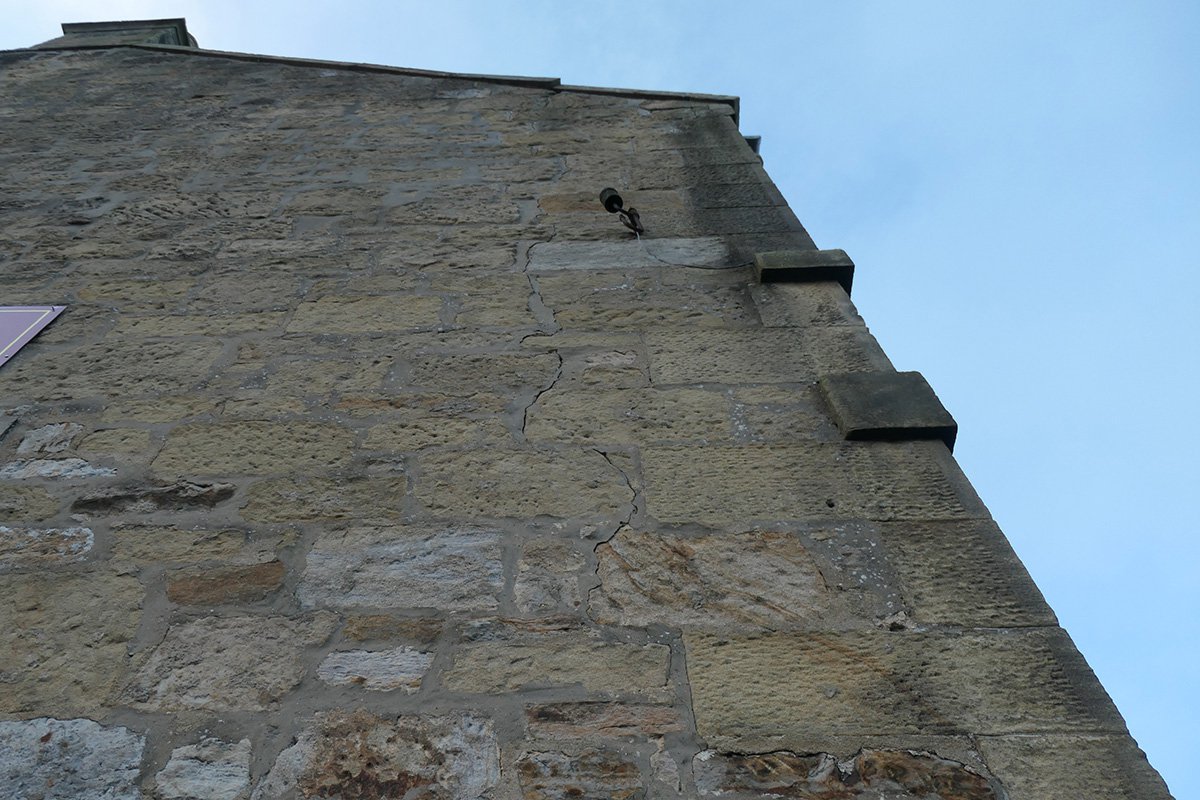
Battle scars of the Bathgate Institute

Mid Street looking towards Jarvey St. The inwards lean of the institute building is match by the lean of houses on the other side of the road
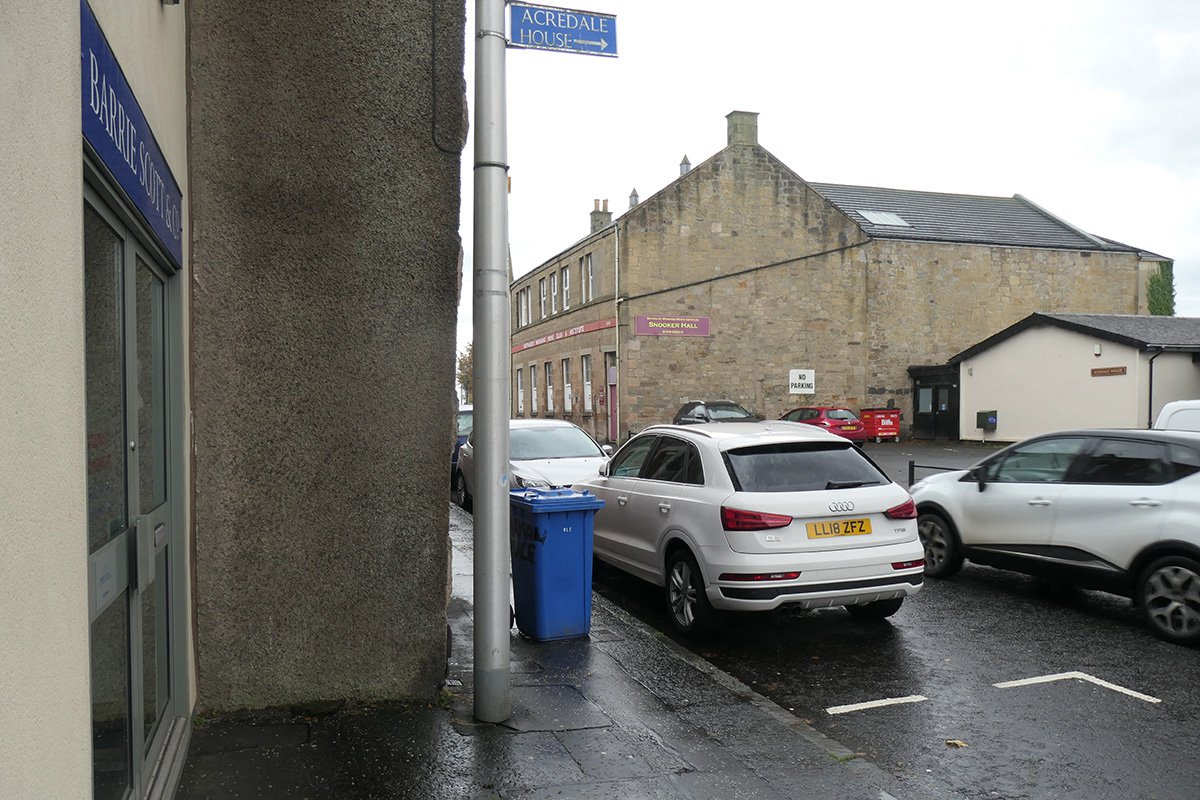
View towards the institute. The lamp post is vertical, the building is not.
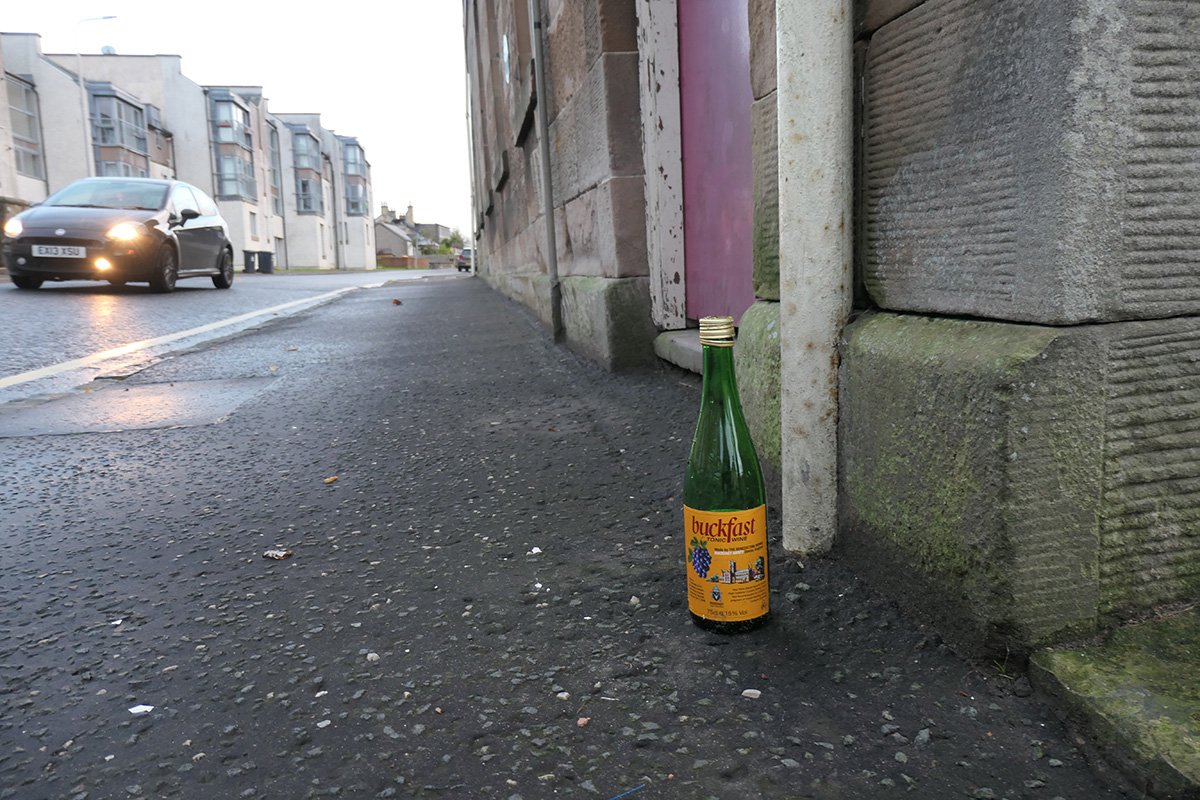
The height of the pavement outside the Institute seems to have changed through the years.